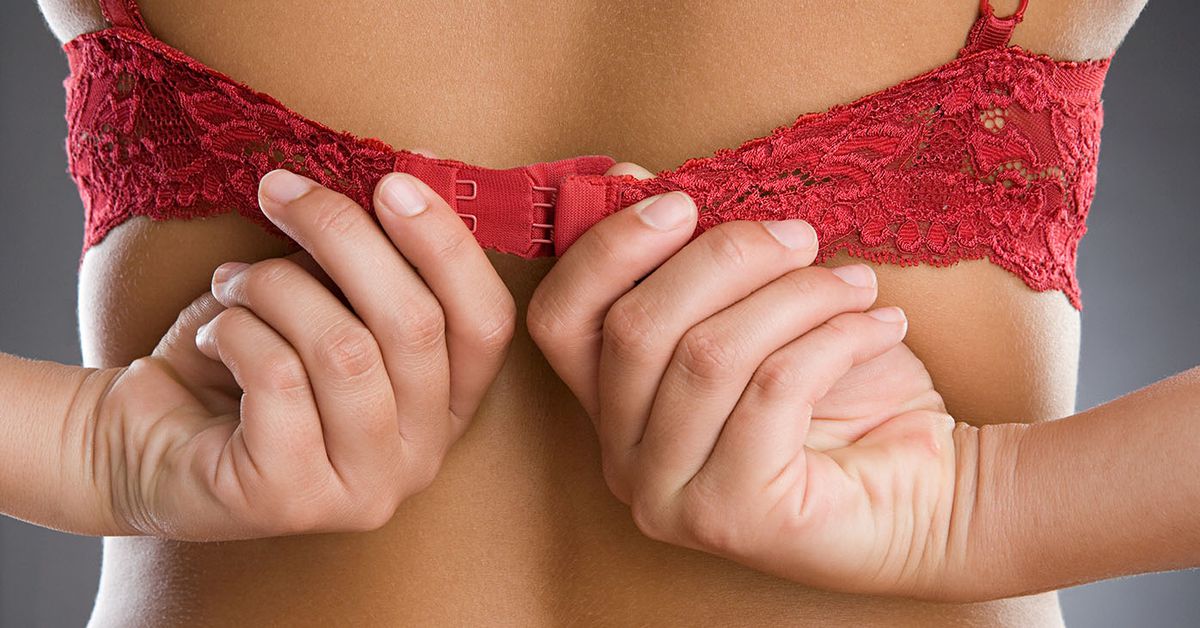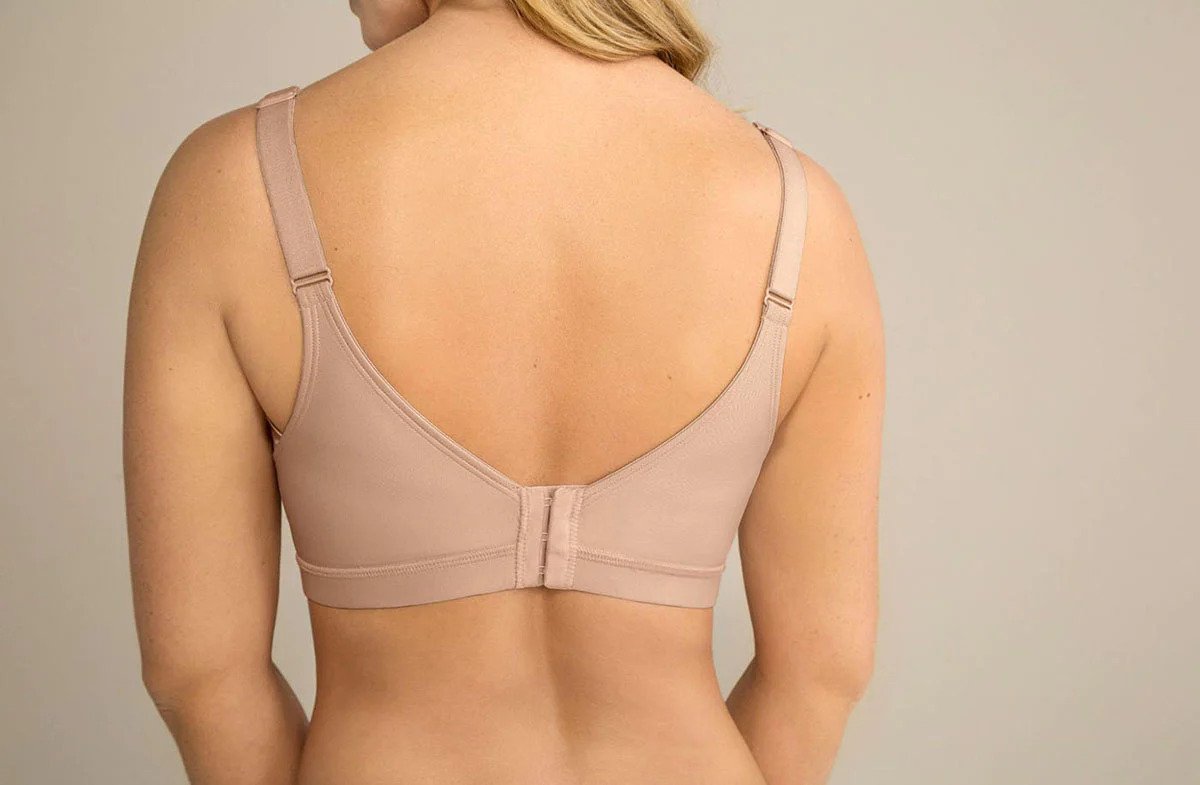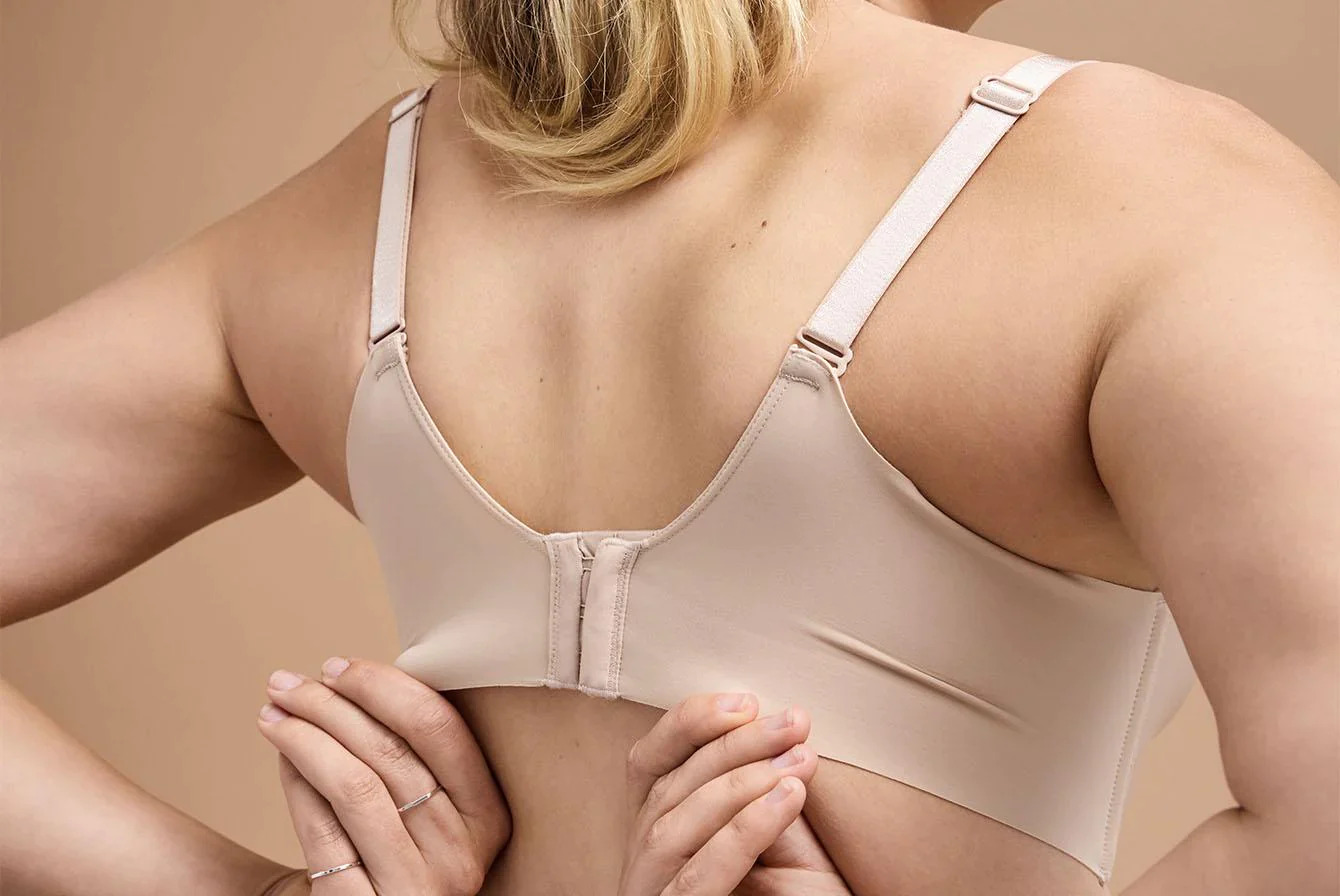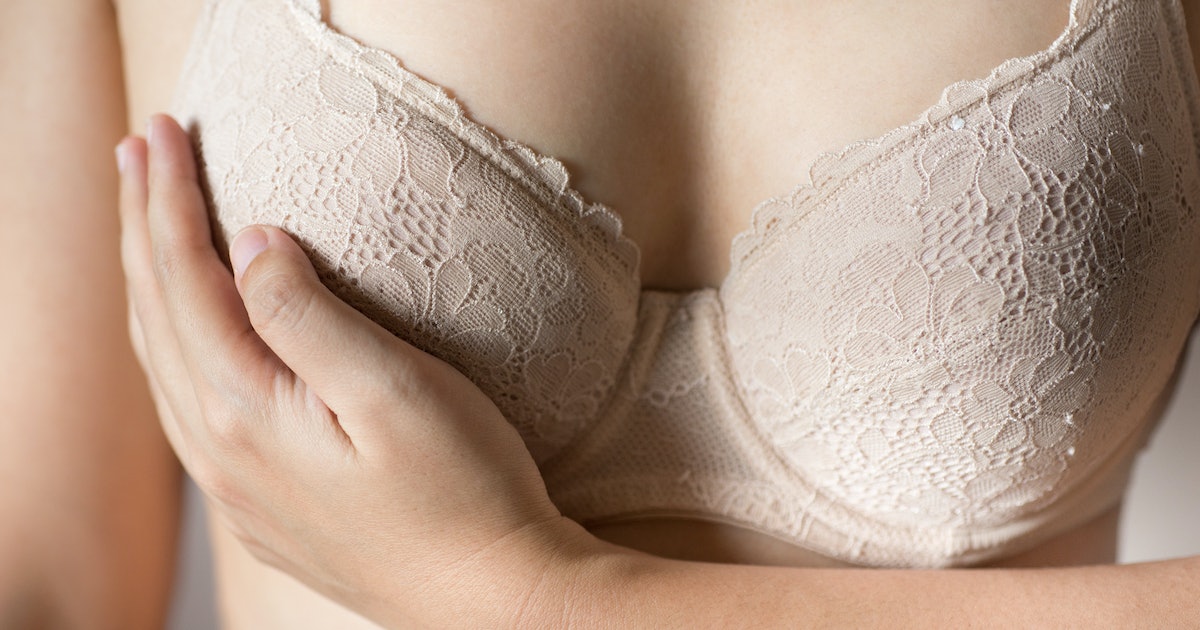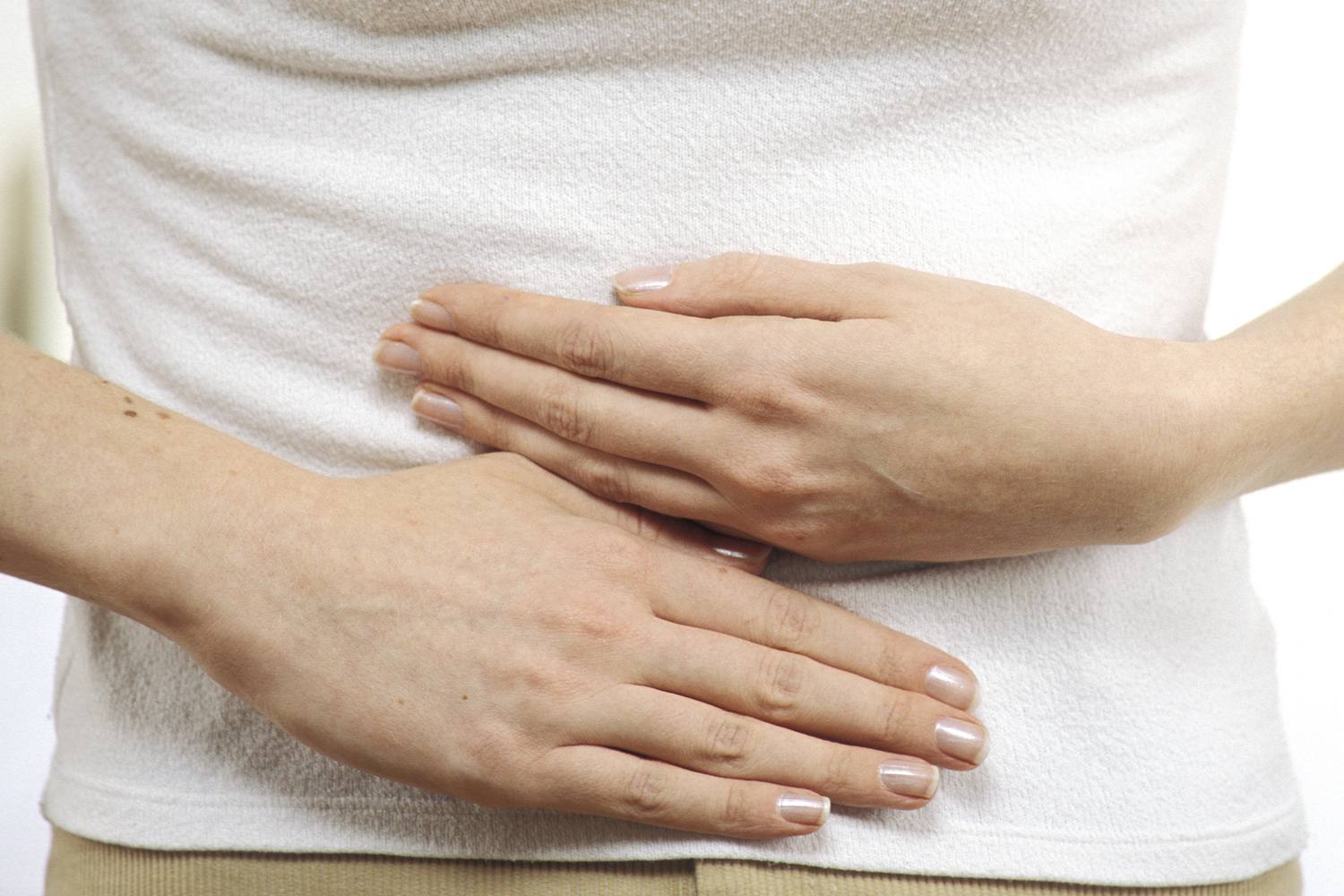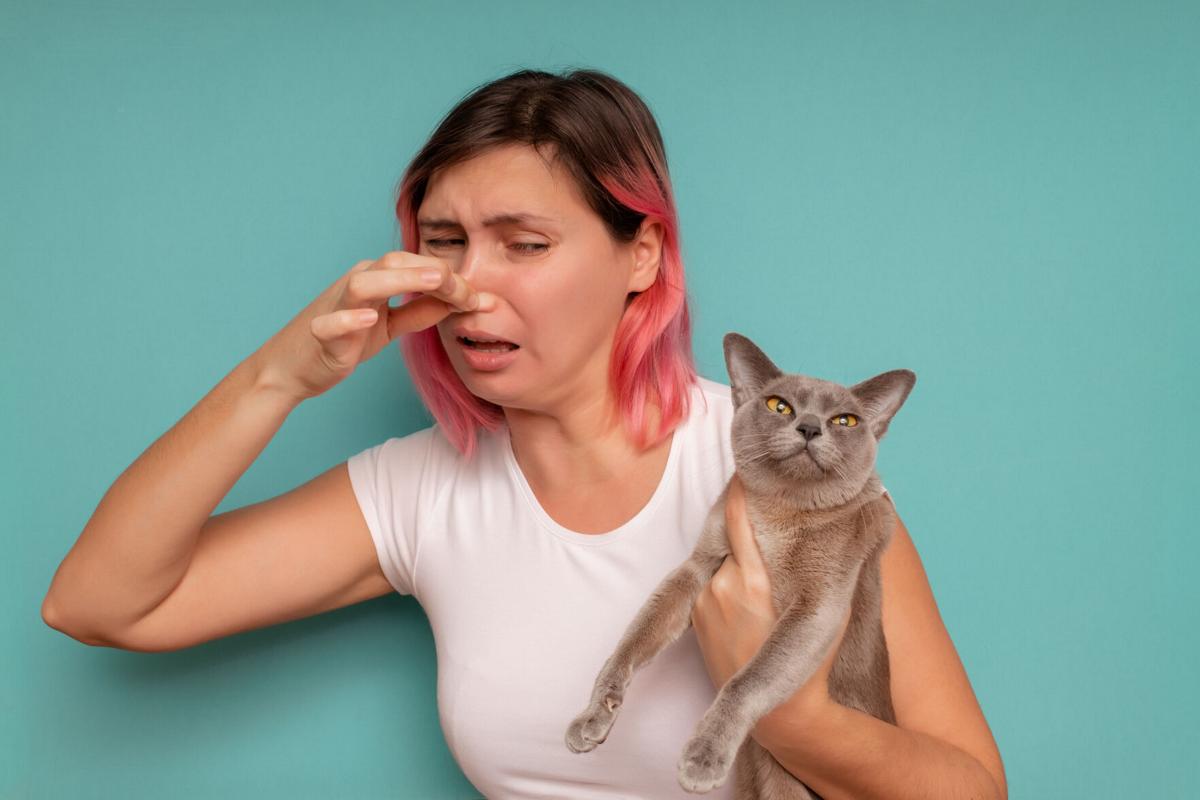Home>Women's Underwear>Bras>Why Does My Bra Strap Fall Off One Shoulder
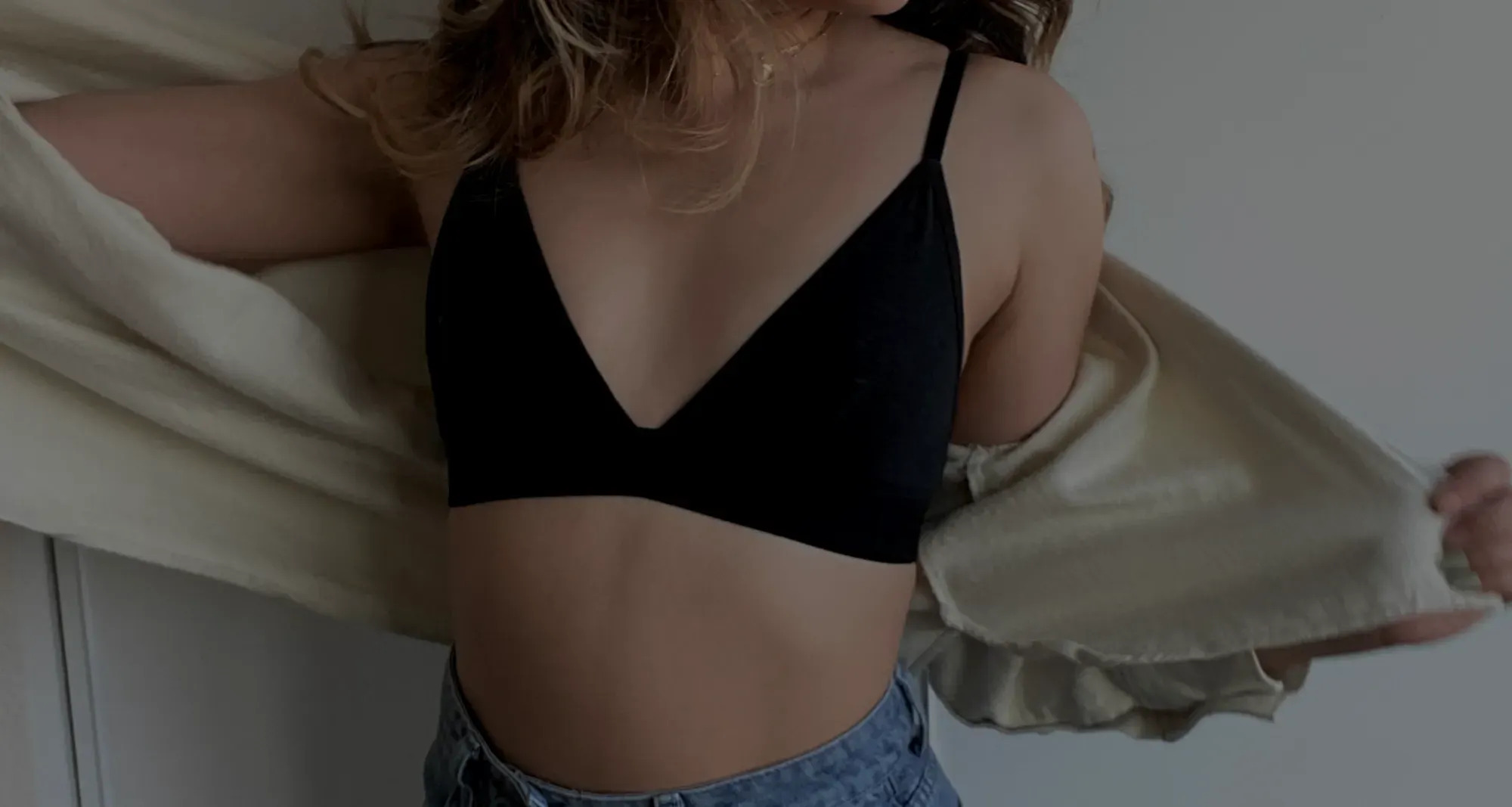

Bras
Why Does My Bra Strap Fall Off One Shoulder
Modified: August 5, 2023
Discover the reasons behind why your bra strap keeps falling off one shoulder and find solutions for a comfortable fit with our range of bras.
(Many of the links in this article redirect to a specific reviewed product. Your purchase of these products through affiliate links helps to generate commission for Under-tec.com, at no extra cost. Learn more)
Table of Contents
- Why Does My Bra Strap Fall Off One Shoulder
- Introduction
- Common Causes of Bra Strap Falling Off One Shoulder
- Incorrect Bra Size
- Worn-out Bra Straps
- Slipping Bra Strap Adjusters
- Sloping Shoulders
- Uneven Breast Size
- Tips to Prevent Bra Strap from Falling Off
- Choosing the Right Bra Size
- Adjusting the Bra Straps Properly
- Using Strap Holders or Converters
- Opting for Racerback or Multiway Bras
- Conclusion
Why Does My Bra Strap Fall Off One Shoulder
Are you experiencing the frustrating issue of your bra strap constantly falling off one shoulder? You are not alone. Many women struggle with this common wardrobe dilemma. Not only is it uncomfortable and annoying, but it can also affect your posture and overall confidence. So, what causes this pesky problem? Let’s explore some common reasons why your bra strap may be slipping off one shoulder.
1. Incorrect Bra Size: One of the primary reasons for bra strap slippage is wearing the wrong bra size. If your bra band is too loose or your cups are too small, it can lead to the straps falling off your shoulders. It’s crucial to get professionally measured to ensure you are wearing the correct size.
2. Worn-out Bra Straps: Over time, bra straps can stretch out or lose their elasticity due to frequent use and washing. When the straps become worn-out, they are more likely to slide down your shoulders. Consider replacing your bra straps if they have become stretched or frayed.
3. Slipping Bra Strap Adjusters: Bra strap adjusters play a crucial role in keeping the straps in place. However, if they are not properly adjusted or have loosened throughout the day, the straps may start to slip. Take a moment to ensure your adjusters are tight enough to prevent slippage.
4. Sloping Shoulders: Some individuals have naturally sloping shoulders, which can make it more challenging for bra straps to stay in place. If you find that your bra straps consistently fall off one shoulder, consider looking for bras with adjustable or convertible straps that can accommodate your shoulder shape.
5. Uneven Breast Size: If you have unevenly sized breasts, it can affect the fit and stability of your bra. The strap on the side with the smaller breast may have a tendency to slip off. You can consider using bra inserts or opt for bras with removable padding to even out your bustline.
It’s essential to note that these are just a few possible causes of bra strap slippage. Every individual is different, and what works for one person may not work for another. It may require some trial and error to find the best solution for you.
Introduction
As a woman, finding the perfect bra that offers comfort, support, and a flattering fit is a top priority. However, it can be incredibly frustrating when one of your bra straps constantly falls off one shoulder. Not only does this create an uncomfortable sensation, but it can also be a major fashion faux pas. Whether you’re attending an important meeting or going out for a night on the town, having a bra strap that won’t stay in place can really put a damper on your confidence and overall appearance.
In this article, we will delve into the various reasons why your bra strap may be slipping off one shoulder. Understanding the causes behind this common issue is the first step towards finding a solution that will keep your bra straps securely in place throughout the day. We will also provide you with some practical tips to prevent this annoyances from happening in the future, ensuring that you can go about your day with ease and confidence.
From wearing the wrong bra size to having sloping shoulders and uneven breast sizes, there are several factors that can contribute to bra strap slippage. We will explore each of these causes in detail so that you can better identify the root of your specific issue. By understanding the underlying reasons behind your bra strap falling off one shoulder, you’ll be able to implement the necessary changes to prevent this occurrence and enjoy a comfortable and secure fit.
In addition to addressing the causes of bra strap slippage, we will also provide you with some practical tips and solutions to keep your bra straps in place. From choosing the right bra size to adjusting the straps properly and utilizing strap holders or converters when needed, we will cover a range of strategies that you can incorporate into your routine. By following these suggestions, you’ll be able to bid farewell to the hassle of constantly readjusting or fighting with your bra straps.
No matter the shape or size of your body, everyone deserves to wear a bra that fits perfectly and stays in place. So, let’s dive into the causes and solutions for a bra strap that keeps slipping off one shoulder, and reclaim your comfort, confidence, and impeccable style!
Common Causes of Bra Strap Falling Off One Shoulder
When it comes to dealing with the annoyance of a bra strap falling off one shoulder, it’s important to understand the common causes behind this issue. By identifying the root cause, you can take the necessary steps to prevent it from happening again in the future. Here are some of the most common reasons why your bra strap may be slipping off one shoulder:
1. Incorrect Bra Size: Wearing the wrong bra size is a leading culprit for bra strap slippage. If your bra band is too loose or your cups are too small, it can cause the straps to constantly fall off one shoulder. To avoid this, it’s crucial to get professionally measured to ensure you are wearing the correct bra size that offers optimal support and a comfortable fit.
2. Worn-out Bra Straps: Over time, bra straps can stretch out or lose their elasticity due to frequent use and washing. When the straps become worn-out, they are more likely to slide down your shoulders. If you notice that your bra straps are no longer providing the necessary support, it may be time to replace them with new ones.
3. Slipping Bra Strap Adjusters: Bra strap adjusters play a crucial role in keeping the straps in place. However, if they are not properly adjusted or have loosened throughout the day, the straps may start to slip. Take a moment to ensure that your bra strap adjusters are tight enough to prevent slippage.
4. Sloping Shoulders: Some individuals have naturally sloping shoulders, which can make it more challenging for bra straps to stay in place. If you find that your bra straps consistently fall off one shoulder, consider looking for bras with adjustable or convertible straps. These types of bras allow you to customize the fit and accommodate your shoulder shape, ensuring a more secure and comfortable wearing experience.
5. Uneven Breast Size: If you have asymmetrical or unevenly sized breasts, it can affect the fit and stability of your bra. The strap on the side with the smaller breast may have a tendency to slip off. Consider using bra inserts or opting for bras with removable padding to even out your bustline and provide better support to both breasts.
By understanding these common causes, you can take proactive steps to address them and prevent your bra strap from constantly slipping off one shoulder. Now that we’ve explored the reasons why this issue occurs, let’s move on to some helpful tips to keep your bra straps securely in place.
Incorrect Bra Size
One of the primary reasons why your bra strap may be constantly falling off one shoulder is wearing the wrong bra size. Unfortunately, many women are not aware of their correct bra size and end up choosing bras that do not offer the right fit or support. Here are some key points to consider regarding the impact of an incorrect bra size on bra strap slippage:
1. Band Too Loose: If the band of your bra is too loose, it fails to provide the necessary support and stability. As a result, the bra strap may slide down your shoulder, causing discomfort and inconvenience. To determine if your band is too loose, try fastening your bra on the tightest hook. If you can easily pull the band away from your body, it indicates that the band is too big and should be downsized.
2. Cups Too Small: Wearing a bra with cups that are too small can also contribute to bra strap slippage. When the cups are insufficient to properly hold and support your breasts, the weight is shifted to the bra straps. This can lead to the straps digging into your shoulders or slipping off. To check if your cups are too small, pay attention to any spillage or bulging over the cup edges. If this occurs, it’s a clear indication that you need a larger cup size.
3. Unevenly Fitting Cups: In some cases, one cup may fit perfectly while the other cup may be too small or too large. This can not only create a noticeable difference in breast appearance but also cause the strap on the side with the ill-fitting cup to fall off. To address this issue, consider getting fitted for a bra with removable padding or opting for bras that allow you to adjust each cup individually. This ensures a more balanced fit and reduces the likelihood of strap slippage.
It’s important to remember that our bodies undergo changes over time, and so do our breasts. Factors such as weight fluctuations, hormonal changes, and pregnancy can all impact our bra size. It is recommended to have a professional bra fitting every six to twelve months to ensure you are wearing the correct size and experiencing optimal comfort and support.
By wearing the right bra size, you can minimize the chances of your bra strap constantly falling off one shoulder. Investing the time to get properly measured and finding bras that fit your unique shape will significantly improve your comfort and confidence. Now that we’ve addressed the impact of an incorrect bra size on strap slippage, let’s move on to explore other potential causes and solutions to keep your bra straps securely in place.
Worn-out Bra Straps
Over time, constant use and washing can take a toll on your bra straps, causing them to stretch out or lose their elasticity. When bra straps become worn-out, they are more likely to slide down your shoulders, leading to the frustrating experience of a constantly slipping bra strap. Here’s what you need to know about the impact of worn-out bra straps on strap slippage:
1. Elasticity Loss: Bra straps are typically made with elastic materials to ensure a snug fit and support. However, over time, the elasticity of the straps can deteriorate, causing them to become looser and less effective at staying in place. As the elastic loses its ability to recover its original shape, the straps are more prone to sliding down your shoulder throughout the day.
2. Fraying or Damaged Straps: The constant friction and pressure on bra straps can lead to fraying or damage, especially along the edges. When the straps start to fray, they become weaker and less reliable in holding your bra securely on your shoulders. If you notice signs of wear and tear, such as loose threads or noticeable thinning of the strap fabric, it’s a clear indication that your bra straps need to be replaced.
3. Stretching: Bra straps are designed to stretch and adapt to your shoulder movements. However, excessive stretching, especially due to improper adjustment, can cause the straps to lose their shape and integrity. As the straps stretch out, they become less supportive and more likely to slide off your shoulders.
If you suspect that your bra straps are worn-out, it’s essential to replace them with new ones to ensure a secure and comfortable fit. Look for bra straps made from high-quality materials that offer excellent elasticity and durability. Additionally, regularly rotate your bras to distribute the wear and tear evenly across different sets of straps.
Remember, well-maintained and properly fitted bra straps can significantly reduce the chances of strap slippage and alleviate the annoyance of constantly readjusting your bra. Now that we’ve explored the impact of worn-out bra straps on strap slippage, let’s move on to discover other factors that can contribute to this issue and how to address them.
Slipping Bra Strap Adjusters
Bra strap adjusters are small devices that allow you to customize the length of your bra straps for a personalized fit. However, if these adjusters are not properly tightened or have loosened throughout the day, it can result in the straps slipping off your shoulders. Let’s explore the impact of slipping bra strap adjusters on strap slippage and how to address this issue:
1. Loose Adjusters: Over time, the constant movement and friction can cause the adjusters to become loose, leading to strap slippage. When the adjusters are not securely fastened, the straps may gradually slip down your shoulders, causing discomfort and inconvenience. It’s important to regularly check and tighten the adjusters to ensure they remain in place throughout the day.
2. Incorrect Adjustment: Improperly adjusted bra straps can also contribute to strap slippage. If the adjusters are set too loose or too tight, it can affect the overall fit and stability of your bra. Straps that are too loose may easily slide off your shoulders, while straps that are too tight may dig into your skin and cause discomfort. Take the time to adjust the straps properly so that they provide the right balance of support and comfort.
3. Re-adjustment throughout the Day: As you move and engage in daily activities, it’s not uncommon for the bra straps’ adjusters to gradually loosen. This can lead to the straps slipping off one shoulder and requiring constant re-adjustment. If you find yourself frequently needing to readjust your bra straps throughout the day, it may be helpful to tighten the adjusters slightly more than you normally would to account for any potential loosening.
To prevent slipping bra strap adjusters, it’s essential to regularly check and tighten them to ensure a secure fit. Additionally, consider using accessories such as strap holders or bra strap converters. Strap holders attach the two bra straps together at the back, preventing them from sliding off the shoulders. Bra strap converters allow you to change your bra into a racerback style, providing a more secure and comfortable fit.
By paying attention to your bra strap adjusters and taking proactive steps to keep them securely fastened, you can minimize the chances of bra strap slippage and enjoy a more comfortable wearing experience. Now that we’ve covered how slipping bra strap adjusters can contribute to strap slippage, let’s move on to explore other potential causes and solutions.
Sloping Shoulders
Sloping shoulders, where the shoulder line gradually tapers downwards, can be another factor that contributes to bra strap slippage. Due to the shape of sloping shoulders, bra straps may have a tendency to slide off one shoulder. Understanding and addressing this specific issue can help prevent strap slippage. Here’s what you need to know about sloping shoulders and how to find solutions:
1. Strap Placement: The placement of the bra straps on your shoulders plays a crucial role in preventing slippage. For sloping shoulders, it’s important to position the straps more towards the center of your shoulder rather than at the edge. By placing the straps slightly closer towards the neck, you create a better angle for them to secure the bra in place.
2. Adjustable or Convertible Straps: Opting for bras with adjustable or convertible straps can be beneficial for those with sloping shoulders. These types of bras allow you to customize the strap length and placement to better suit your shoulder shape. For instance, you can try tightening the straps slightly more on the side with the sloping shoulder to provide additional support.
3. Racerback or Multiway Bras: Racerback or multiway bras can also be a great solution for sloping shoulders. These bras have straps that come together in a V-shape or cross in the back, providing a more secure fit that helps distribute the weight evenly across the shoulders. This design prevents the straps from slipping off and offers better stability throughout the day.
4. Bra Strap Cushions: Consider using bra strap cushions, which are soft pads that attach to your bra straps to provide extra grip and comfort. These cushions help prevent the straps from slipping off your shoulders and also alleviate any pressure or irritation that can occur from the straps digging into your skin.
Remember that everyone’s body is unique, and what works for one person may not work for another. It may require some experimentation and trial and error to find the best solution for managing bra strap slippage caused by sloping shoulders. Don’t be afraid to try different bra styles or accessories until you find the combination that offers the best fit, support, and comfort.
By addressing the specific challenge of sloping shoulders and implementing strategies to customize the fit of your bras, you can reduce the frustration of constantly adjusting slipping bra straps and enjoy a more secure and comfortable wearing experience.
Uneven Breast Size
Having unevenly sized breasts, also known as asymmetrical breasts, is a common occurrence among women. However, this difference in breast size can contribute to bra strap slippage, as the strap on the side with the smaller breast may have a tendency to fall off one shoulder. Here’s what you need to know about addressing uneven breast size to prevent strap slippage:
1. Bra Inserts or Padding: One way to address uneven breast size is by using bra inserts or padding. These are small, removable pads that can be placed inside the cup of your bra to help even out the appearance and volume of your breasts. By adding inserts or padding to the side with the smaller breast, you can create symmetry and prevent the strap from slipping off.
2. Removable Pads: Another option is to choose bras that come with removable padding or cups. This allows you to adjust the padding according to the size of each breast. By using more padding on the side with the smaller breast, you can achieve a more balanced look and ensure that the straps remain securely in place.
3. Balconette or Plunge Bras: Balconette or plunge bras with underwire can be beneficial for women with uneven breast size. These bra styles lift and shape the breasts, providing better support and minimizing the chances of strap slippage. The underwire helps to enhance the natural contour of your breasts and maintain the positioning of the straps.
4. Custom-fitted Bras: Consider getting custom-fitted bras tailored to your specific breast measurements. Custom-fitted bras are designed to accommodate the size and shape of each breast individually, ensuring a more secure and comfortable fit. With a properly fitting bra, the straps are less likely to slip off, even if you have uneven breast size.
It’s worth noting that uneven breast size is entirely normal and experienced by many women. However, if the difference in size is significant or causes discomfort, you may consider consulting with a healthcare professional or a lingerie specialist. They can provide further guidance and recommend tailored solutions based on your specific needs.
By using bra inserts or padding, opting for removable pads, choosing suitable bra styles, or investing in custom-fitted bras, you can address the issue of uneven breast size and minimize the chances of strap slippage. Let’s now move on to explore some practical tips and strategies to prevent bra strap slippage altogether.
Tips to Prevent Bra Strap from Falling Off
Dealing with a bra strap constantly falling off one shoulder can be frustrating. Luckily, there are several tips and strategies you can try to keep your bra straps securely in place. By implementing these preventative measures, you can enjoy a comfortable and hassle-free wearing experience. Here are some helpful tips to prevent your bra strap from falling off:
1. Choosing the Right Bra Size: Wearing the correct bra size is crucial for preventing strap slippage. Visit a professional bra fitter to get accurately measured. A well-fitted bra will provide the necessary support and ensure that the straps stay securely in place throughout the day.
2. Adjusting the Bra Straps Properly: Take the time to adjust your bra straps to the right length. Ensure that the straps are not too loose, as this can lead to them slipping off. On the other hand, straps that are too tight can dig into your skin and cause discomfort. Ideally, the straps should provide a snug fit without feeling too restrictive.
3. Using Strap Holders or Converters: Strap holders or bra strap converters are handy accessories that can help keep the straps in place. Strap holders are small clips that connect the straps at the back, preventing them from slipping off your shoulders. Bra strap converters can transform your bra into a racerback or multiway style, which provides better stability and support.
4. Opting for Racerback or Multiway Bras: Racerback or multiway bras have straps that converge or cross in the back. This design redistributes the weight of the breasts and offers better support, reducing the chances of strap slippage. These bras are particularly useful if you have sloping shoulders or engage in activities that require more secure bra straps.
5. Trying Different Bra Styles: Different bra styles may work better for different individuals. If you’re experiencing consistent strap slippage, experiment with different bra designs and find one that suits your body shape and needs. For example, a balconette bra with wider-set straps or a bra with adjustable straps may offer more security for some individuals.
6. Checking Regularly Throughout the Day: Take a moment to check your bra straps periodically throughout the day and make any necessary adjustments. This is especially important if you’ve been moving around a lot or engaging in physical activities that may cause the straps to shift.
7. Replace Worn-out Bra Straps: If your bra straps have lost their elasticity or are showing signs of wear and tear, it’s time to replace them. Worn-out straps are more likely to slip off your shoulders and contribute to strap slippage. Invest in high-quality bra straps that can withstand daily use and maintain their shape over time.
Remember, finding the right fit and using proper adjustments can go a long way in preventing bra strap slippage. By selecting the right bra size, adjusting the straps correctly, using accessories like strap holders or converters, trying different bra styles, and regularly checking your bra straps, you can ensure a secure and comfortable fit throughout the day.
Now that you have a range of tips to prevent bra strap slippage, you can confidently wear your bras without worrying about constantly readjusting or dealing with discomfort. Enjoy the freedom and comfort you deserve!
Choosing the Right Bra Size
Choosing the right bra size is essential for ensuring both comfort and support, and it plays a significant role in preventing strap slippage. Wearing an ill-fitting bra not only affects the overall look and feel but can also lead to straps constantly falling off. Here are some key points to consider when it comes to selecting the right bra size:
1. Get Professionally Measured: Visiting a professional bra fitter is the best way to determine your accurate bra size. Bra size can vary based on factors such as weight fluctuations, pregnancy, and aging. A bra fitter will take precise measurements and guide you in finding the perfect fit. Remember, size labels can differ across brands, so relying solely on the numbers or letters may not ensure the right fit.
2. Band Size: The band of your bra provides the majority of the support. It should fit snugly around your ribcage, parallel to the ground. If your band is too loose, it won’t provide adequate support, causing the straps to bear more weight and potentially slip off. On the other hand, a band that is too tight can feel uncomfortable and restrict your breathing. Make sure to try different band sizes to find the one that offers the right balance of support and comfort.
3. Cup Size: The cup size determines how well the bra accommodates your breast tissue. If your cups are too small, they can compress your breasts, leading to discomfort and potential spillage. Cups that are too large can create gaps and fail to provide the necessary support. Ensure that the cups fully enclose your breast tissue and provide a smooth and seamless fit.
4. Scoop and Swoop Technique: When trying on a bra, use the “scoop and swoop” technique to ensure that all of your breast tissue is properly placed within the cups. Lean forward slightly, and use your hands to lift and position your breasts within the cups. This technique helps ensure that your bra correctly fits your breasts and reduces the chances of strap slippage.
5. Check the Fit Regularly: Bra sizes can change over time due to factors such as weight loss, weight gain, pregnancy, and hormonal changes. It’s important to check the fit of your bras regularly and make adjustments as needed. If you notice any signs of discomfort, spillage, or strap slippage, it may be time to reassess your bra size.
Remember, your bra size is not a static measurement, and it’s important to regularly evaluate and adjust it as needed. Investing time and effort into finding the right bra size will not only prevent strap slippage but also enhance your overall comfort and confidence.
By getting professionally measured, paying attention to both band and cup sizes, using the scoop and swoop technique, and regularly checking the fit, you can ensure that you’re wearing the right bra size to prevent strap slippage and optimize your bra-wearing experience.
Adjusting the Bra Straps Properly
Properly adjusting your bra straps is essential for achieving a secure and comfortable fit and preventing strap slippage. Here are some important tips to ensure you are adjusting your bra straps correctly:
1. Length Adjustment: Start by adjusting the length of your bra straps. The straps should not be too loose or too tight. They should provide a snug fit that offers support without digging into your shoulders. Gradually tighten or loosen the straps until you achieve the desired fit.
2. Symmetrical Adjustment: It’s important to ensure that both bra straps are adjusted to the same length. If one strap is significantly longer or shorter than the other, it can lead to an imbalanced fit and increase the chances of strap slippage. Take the time to ensure that both straps are adjusted symmetrical.
3. Finger Test: After adjusting the length, perform a quick finger test. Insert one or two fingers between your shoulder and the bra strap on each side. If your fingers can easily slide in and out, it indicates that the straps are properly adjusted and provide a comfortable level of support. If there’s too much tension or the straps feel too loose, make the necessary adjustments accordingly.
4. Regular Checking: Throughout the day, take a moment to check your bra straps and make any necessary readjustments. As you move and engage in different activities, the straps may gradually loosen or shift. Frequent checks and minor tweaks can help maintain a secure and comfortable fit, reducing the chances of strap slippage.
5. Experiment with Different Tension Levels: Different individuals may prefer varying levels of strap tension. Some may prefer a slightly looser fit, while others feel more comfortable with slightly tighter straps. Experiment with different tension levels to find the balance that works best for you. Remember, straps that are too loose may slip off, while those that are too tight can cause discomfort and digging into your skin.
6. Consider Adjustable Bras: Opt for bras with adjustable straps to maximize your customization options. Bras with adjustable straps allow you to easily fine-tune the length whenever necessary. This flexibility can be particularly useful if you have sloping shoulders or experience any changes in your body size over time.
By adjusting your bra straps properly, you ensure a comfortable fit that minimizes the chances of strap slippage. Taking the time to find the correct tension and maintaining regular checks throughout the day will help you achieve a secure and supportive fit.
Remember, proper adjustment is just one aspect of preventing strap slippage. In the next sections, we will explore additional tips and strategies to keep your bra straps securely in place throughout the day.
Using Strap Holders or Converters
If you struggle with bra strap slippage, using strap holders or converters can be a game-changer. These accessories are designed to keep your bra straps securely in place, providing added support and minimizing the chances of them falling off. Here’s how strap holders or converters can help:
1. Strap Holders: Strap holders are small clips or rings that attach to the back of your bra straps. They work by connecting both straps together, preventing them from sliding off your shoulders. By keeping the straps in place, strap holders ensure a more stable and comfortable fit throughout the day. Strap holders are particularly useful for individuals whose shoulders slope or for those who engage in activities that require a more secure bra.
2. Bra Strap Converters: Bra strap converters are versatile accessories that allow you to change the style and configuration of your bra straps. They typically come in the form of a clip or adjustable attachment. By using a bra strap converter, you can transform your regular bra into a racerback or a multiway bra. This reconfiguration helps distribute the weight more evenly across your back and shoulders, reducing the chances of strap slippage.
3. Adjustable Converters: Some bra strap converters come with adjustable features that allow you to customize the tension and positioning of the straps according to your needs. This adjustability is particularly beneficial if you have unique body proportions or experience changes in your body shape over time. You can experiment with different settings to find the most comfortable and secure fit for your bra straps.
Strap holders and converters are practical and convenient solutions for preventing strap slippage. They provide an extra layer of support and stability to keep your bra straps in place throughout the day. Whether you have sloping shoulders, engage in vigorous activities, or simply want added confidence while wearing your favorite bra, these accessories can make a noticeable difference.
It’s important to note that strap holders and converters come in various designs and sizes. Take the time to explore different options and find the ones that best suit your bra style and personal preferences. You can find these accessories in lingerie stores, department stores, or online retailers, making it easy to incorporate them into your bra-wearing routine.
By using strap holders or converters, you can enjoy a more secure and comfortable fit for your bra straps. These accessories are simple yet effective solutions that can significantly reduce the frustrations of constantly having to readjust slipping bra straps.
Next, we will explore another practical solution to prevent strap slippage – opting for bras with specific styles that offer enhanced support and stability.
Opting for Racerback or Multiway Bras
If you are tired of dealing with constantly slipping bra straps, opting for racerback or multiway bras can provide a practical solution. These bras are designed with straps that converge or cross in the back, offering enhanced support and minimizing the chances of strap slippage. Here’s how racerback or multiway bras can help:
1. Enhanced Stability: The design of racerback or multiway bras provides increased stability compared to traditional bra styles. With the straps converging or crossing in the back, the weight of your breasts is more evenly distributed across your shoulders, reducing the likelihood of the straps slipping off. This added stability is particularly beneficial for individuals with sloping shoulders or those who engage in activities with more movement.
2. Reduced Strain on Shoulders: Racerback or multiway bras help alleviate strain on your shoulders. By distributing the weight of your breasts more evenly across your back, these bras can alleviate the pressure that can cause discomfort and strap slippage. If you find that traditional bra straps dig into your shoulders and create marks, switching to a racerback or multiway style can provide relief.
3. Customizable Fit: Some racerback or multiway bras come with adjustable straps, allowing you to customize the fit according to your unique body shape and preferences. This flexibility ensures that the straps fit snugly and securely, preventing them from slipping off. You can experiment with different strap placements and lengths to find the most comfortable and supportive fit for your body.
4. Versatility: Racerback or multiway bras offer versatility, as they can be worn with various types of outfits. The ability to adjust or convert the straps allows you to adapt the bra to suit different neckline styles. Whether you need a bra for a racerback top or a dress with a cut-out back, these bras provide the flexibility to accommodate your wardrobe choices while keeping your straps securely in place.
When choosing a racerback or multiway bra, ensure that it is the right size and offers the necessary support for your breasts. Consider trying on different styles and brands to find the one that fits and feels the most comfortable for you. Some bras may have a front closure, while others may be pulled over your head – choose the closure type that is most convenient for you.
Racerback or multiway bras can be a game-changer for individuals who struggle with strap slippage. By providing enhanced stability and a customizable fit, these bras help keep your straps securely in place throughout the day. They offer comfort, support, and versatility, allowing you to feel confident and hassle-free while wearing any outfit.
Now that we’ve covered the benefits of racerback or multiway bras, let’s explore some final tips and considerations to help you maintain a secure and comfortable fit for your bra straps.
Conclusion
Dealing with a bra strap constantly falling off one shoulder can be frustrating and inconvenient. However, by understanding the common causes and implementing the right strategies, you can prevent strap slippage and enjoy a comfortable and secure bra-wearing experience. Here’s a recap of the key points discussed:
1. Choose the Right Bra Size: Wearing the correct bra size is crucial for preventing strap slippage. Get professionally measured to ensure a proper fit that offers optimal support and comfort.
2. Adjust the Bra Straps Properly: Take the time to adjust your bra straps to the right length and ensure they are symmetrical. Regularly check and make slight adjustments throughout the day if needed.
3. Utilize Strap Holders or Converters: Strap holders and converters are effective accessories that can help keep your bra straps securely in place. They provide added support and stability, reducing the chances of slippage.
4. Consider Racerback or Multiway Bras: Opting for racerback or multiway bras distributes the weight more evenly across your shoulders and offers enhanced stability. These bras are especially beneficial for those with sloping shoulders or who engage in activities with more movement.
5. Address Uneven Breast Size: If you have unevenly sized breasts, using bra inserts or padding, or opting for bras with removable cups can help achieve a more balanced look and prevent strap slippage.
By implementing these strategies, you can significantly minimize the occurrence of strap slippage and maximize your comfort and confidence while wearing your bras.
Remember, finding the right fit, adjusting your bra properly, and using the right accessories can make a world of difference. Everyone’s body is unique, and it may take some trial and error to find the best solutions for you. Don’t be afraid to explore different bra styles, brands, and techniques to discover what works best for your needs and preferences.
Finally, regular checks and maintenance are essential. Pay attention to any changes in your body size or shape, and periodically reassess your bra size and fit. This proactive approach will ensure that you continue to enjoy a secure and comfortable fit throughout the lifespan of your bras.
Now, armed with these tips and strategies, you can confidently bid farewell to the frustration of constantly adjusting your slipping bra straps. Embrace the comfort, support, and freedom that comes with properly fitting and securely fastened bra straps!
